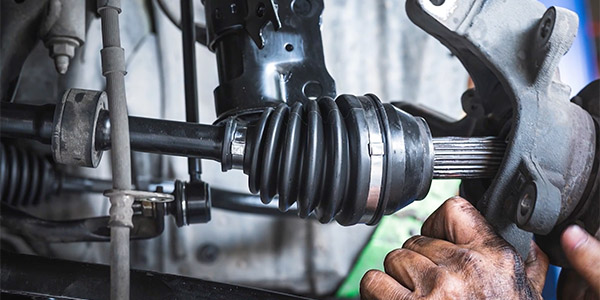“LOF” stands for “lube” “oil” and “filter.” But over the years, many of us have forgotten the “lubricate” part of the service. While many cars and trucks no longer have ball joints and tie rods that need to be greased, they do have hinges, latches and tracks that need lubrication periodically.
A door has four main lubrication points. The hinges at the front of the door are constructed with plastic bushings, steel shaft and hinges that could be made of aluminum or steel.
WD-40 Specialist Gel Lube is designed to resist water and prevent rust. The lubricant is designed to stick to vertical surfaces and goes on thick, staying where you spray. It is designed to operate in conditions from -100 to 500 degrees.
You can also use it on door checks that limit the travel of the door. The secret is to first wipe the area clean and then apply Gel Lube.
At the rear of the door on the latch mechanism, the best product to use is WD-40 Specialist Silicone lubricant. This lubricant dries fast and leaves a clear, non-staining film that won’t attract dirt. This is critical because the driver will come in contact with the striker plate. The silicone-based spray lubricates and waterproofs the latching mechanism.
For vans with power sliding doors, lubrication is critical to keep the doors working. On the outside, you have tracks exposed to road spray. On the inside, fast food and sticky drinks can jam the mechanism. If the door is not lubricated, it can set off the anti-pinch system and prevent the door from opening and closing.
For door slides, it is critical to clean the tracks and rollers first. Next, apply a thin coating of WD-40 Specialist Dry Lube to the tracks and rollers. It dries quickly, leaving behind a lubricating film that resists dirt and dust buildups. It is effective in temperatures ranging from -50°F to 500°F.
Don’t forget the fuel door. Many fuel doors are actuated by an electric solenoid to pop the door. If the hinge, spring or latch is jammed up with dirt or even ice, the driver might have a bad day at the fuel pump.
Apply a very light coating of WD-40 Specialist Silicone lube to the latch, hinge, and spring tabs. If the door has a rubber gasket, apply a light coating with a rag. By using a silicone-based lubricant, you are not only lubricating the surfaces but waterproofing or “ice proofing” them at the same time.
Before you close the hood, give a quick squirt of WD-40 Specialist Silicone lubricant to the hood latch mechanism. This can reduce the force required to pop the hood and save the life of the cable.
By putting “lube” back in the LOF, you can create an oil change that puts your shop above the rest.
This video is sponsored by WD-40 Brand.













